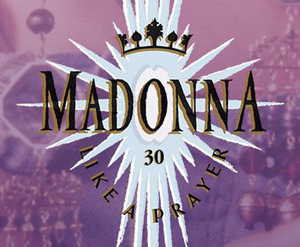 As 1989 began, there was no question that Madonna was already a decade-defining superstar. But no one knew if she, like Bee Gees to the ‘70s or Beach Boys to the ‘60s, would prove a decade-constricted artist whose relevance would wane as a new decade turned over.
As 1989 began, there was no question that Madonna was already a decade-defining superstar. But no one knew if she, like Bee Gees to the ‘70s or Beach Boys to the ‘60s, would prove a decade-constricted artist whose relevance would wane as a new decade turned over.
Like a Prayer, the magnum opus of her first decade and arguably her defining creative statement, came out 30 years ago today (March 21, 1989) and established that Madonna was not a pop star for her time, but for all time. And in the process, it gave us one of the most unlikely No. 1 smashes of her (or any career) and forced the world beyond her teenage fanbase to acknowledge her formidable vision.
Since history is written by the victors, Madonna maintaining her pop culture dominance well past the ‘80s seems like a historical inevitability these days. But in 1989, that was hardly the case. While she’d netted six Billboard Hot 100 No. 1s prior to Like A Prayer and released five smash albums (three studio LPs, a soundtrack and a remix album), her sound had remained decidedly of the era up until this point. Even as her subject matter deepened on 1986’s True Blue(dedicated to husband Sean Penn, from whom she’d file for divorce in Jan. 1989), the sonic palette was unmistakably ‘80s: bubbling dance-pop for the high-energy numbers, pounding beats and widescreen production for the ballads, and her voice only occasionally stretching for maturation (as on “Live to Tell”).
Read full article at Billboard


